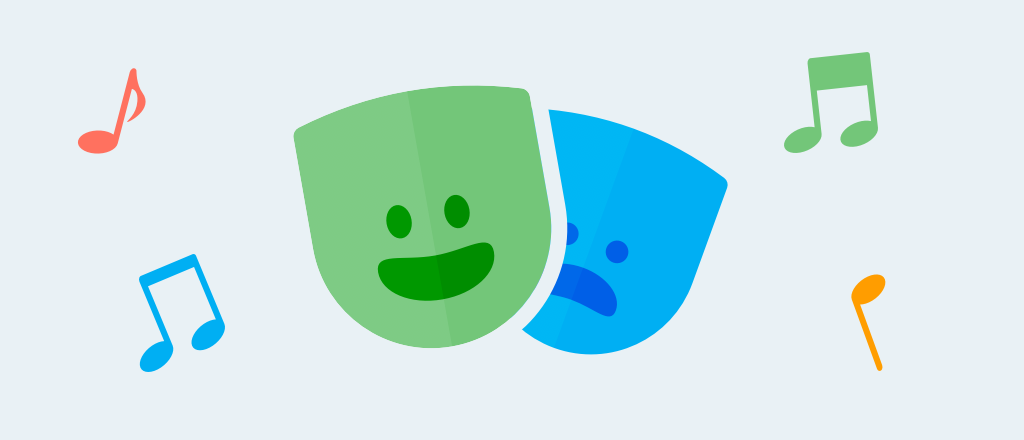Take a culture pill - feel better!
Can culture help those who are chronically ill and living with pain? Yes, according to a new report from WHO. The report compiled the results from over 3,000 scientific studies. There are many examples of how health is related to culture, such as dance, art or literature. In Sweden, too, there is research that shows that we feel better after singing, attending art exhibitions and enjoying crafts.
Over the past two decades, research into the effects of culture on health and well-being has increased significantly. Now, the World Health Organization (WHO) has carried out a survey of all the research in the area. The report refers to over 3,000 studies, making it the most comprehensive to date. Culture in this context can refer to anything from literature, visual arts, music and dance to expressing one’s own creativity through art experiences.
WHO hopes to raise awareness among decision-makers about the important relationship between culture and health, but also to promote the treatment and rehabilitation of people with various diseases. The report aims to increase knowledge and promote the development of health-related cultural programs to aid public health. (1)
Art, music and dance therapy increase well-being
In the overall report, studies are presented on a variety of cultural forms that can prevent ill-health and improve well-being. The results show culture can be used as part of treatment or rehabilitation to help people with mild, moderate and severe mental illness, trauma or abuse, for example. Studies also show that culture can improve mental health, physical function, and social and emotional well-being in people with chronic conditions, such as disorders of the nervous system. (3)
Here are some more examples:
Art therapy can help with self-management of chronic and long-term conditions. Art has also been shown to reduce physical and mental distress and drug side effects.
The “Culture on prescription” program has shown results such as reductions in anxiety, depression and other mental stress.
Dance therapy has shown clear results to alleviate the symptoms of mental illness.
Music therapy has proven to have beneficial effects on people with cardiovascular disease. Singing has been shown to provide relief in chronic conditions in the respiratory system and in cystic fibrosis. (2)
Culture on prescription - a research project into long-term pain and culture
In a collaboration between the Pain Center at Danderyd Hospital and the Stockholm County Council, two pilot projects aimed to investigate how culture can affect people with long-term pain. This form of rehabilitation was given the name Culture on Prescription.
Participants were given the opportunity to dance, go to an art exhibition, visit libraries or attend craft shows. The project stated that the activities would enable participants to leave their daily lives, which were dominated by the pain problem. Culture spoke to the healthy, not to the sick.
"We want people to escape the negative spiral to live their lives despite their long-term pain," says Monika Löfgren at the Pain Center at Danderyds Hospital, where the study was conducted. Our mission in health care is to limit sickness, but with a reverse perspective focusing on the healthy, it is also possible. We learned a lot from doing projects like these. (4, interview Monika 2019)
Singing increases the hormones which make us feel calm
Christina Grape Viding has worked in nursing for 30 years and is a Ph.D. student at the Department of Public Health and Caring Sciences, General Medicine and Preventive Medicine in Uppsala, where she researches how culture affects us.
- While I was studying public health, I was also taking singing lessons, says Christina Grape Viding. I started wondering whether it was possible to measure that experience. Is it possible to see in blood samples what happens when you sing?
The study included both amateur and professional singers. It was carried out during a singing lesson and showed an increase in the hormone Oxytocin for 13 of the 16 song students. Oxytocin is sometimes called a “calm hormone” that makes us feel good. Something that was also interesting was that the amateur singers felt happier than the professional singers. But both groups felt more energetic.
- Our bodily systems are constantly active and present during a song. We become more relaxed, working with our breathing, which can give us a better ability to handle stress. I like to say the song gives us small showers of happy hormones, says Christina Grape Viding.
- Music affects us more than we think: it can create very strong feelings. And that means you have to really get involved. It also makes us more aware of our bodies and gives us a sense of being part of something bigger.
Christina Grape Viding also wants to highlight that she has met many people dealing with long-term pain in her professional life, where cultural activities have offered them a chance to shift their focus. She has seen study participants who have arrived with real physical issues, where it has clearly been possible to see how ill they are. Once they have participated for some time, they come into the group with a whole new body language and expression in their faces. (5.6)
Tips for those who want to inject more culture into everyday life
You don’t need to have a prescription to enjoy culture! The studies show that a wide range of cultural activities can give a positive effect. Your ability to access different activities does, of course, vary according to where you are. But you will benefit from activities as varied as going to an art exhibition, creating art yourself, singing in a choir or even practicing a craft. What do you like to do, and what would you like to try?
